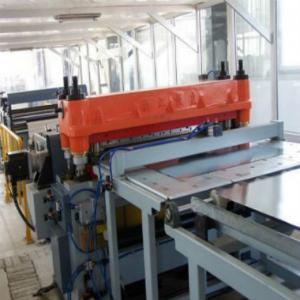Prime Quality Tinplate Sheets for 0.21mm
- Loading Port:
- Tianjin
- Payment Terms:
- TT OR LC
- Min Order Qty:
- 25 m.t.
- Supply Capability:
- 8000 m.t./month
OKorder Service Pledge
OKorder Financial Service
You Might Also Like
1.Structure Description
Electrolytic Tinplate Sheets is one of the metal packing materials, which is widely used for making painting cans ,chemical package cans , electrical cable ,battery and metal printing etc.
2. Main Features
Steady and high quality
Fast shipment
Good experience for export work
For the surface, Plate uniform in thickness,uniform and smooth tin coating, without flaws,rusts,scratch,wave,nick of tin coating etc.
Price competitive
3.Images

4. Specification
Standard : GB2520-2000 ,JIS G3303
Steel type : SPCC
Coating : 2.8/2.8
Surface: Bright, Stone ,
Thickness:0.26
Width :600MM~1000MM
Temper : T1~T5
Package: tinplate wrapped completely with an inner cover of plastic or waterproof papers with vorners protected with metal angels.
5.FAQ
A. What is the package of tinplate? (Referred as below)
For sheets, thin plastic film + rust-proof paper + metallic cover + metallic angles+ steel band strips + fumigated wooden pallet.
For coil, thin plastic film + rust proof paper + metallic cover + steel band strips + fumigated wooden pallet
B. The surface of tinplate could you supply?
Stone finish, Bright finish, Matte finish, Silver finish
- Q: How does tinplate packaging contribute to product protection against leakage?
- Tinplate packaging contributes to product protection against leakage primarily due to its durable and corrosion-resistant properties. The tin coating on the steel substrate prevents any contact between the product and the surrounding environment, minimizing the risk of leakage. Additionally, tinplate packaging is often manufactured using advanced sealing techniques, ensuring airtight and leak-proof closures. Overall, the robust nature of tinplate packaging serves as a reliable barrier, safeguarding the product from potential leakage and preserving its quality.
- Q: How is tinplate affected by different types of dairy products?
- Tinplate, a type of steel coated with a thin layer of tin, can be affected by different types of dairy products in terms of corrosion. Dairy products, particularly those with high acidity or salt content, can cause the tin coating to corrode over time. This can result in changes in the taste, odor, and quality of the dairy products stored in tinplate containers. Therefore, proper packaging and storage conditions need to be ensured to maintain the integrity of tinplate when storing dairy products.
- Q: What are the main applications of tinplate in the textile industry?
- Tinplate is commonly used in the textile industry for applications such as canning and packaging of textile products. It provides a protective and decorative coating that enhances the visual appeal and durability of the packaging materials. Additionally, tinplate is also utilized for manufacturing sewing machine needles and other textile machinery components, as it offers excellent corrosion resistance and strength properties.
- Q: What are the main applications of tinplate in the agricultural industry?
- Tinplate is commonly used in the agricultural industry for various applications such as packaging for seeds, fertilizers, and pesticides. It provides a durable, corrosion-resistant, and tamper-proof solution that helps protect these products from external elements. Additionally, tinplate is also utilized for manufacturing agricultural equipment, containers, and storage tanks due to its strength and resistance to rust.
- Q: What are the different types of tinplate finishes available?
- Some of the different types of tinplate finishes available include bright, matte, and stone finishes.
- Q: What are the different coatings used on tinplate?
- There are several different coatings used on tinplate, including tin-free steel (TFS), electrolytic tinplate (ETP), tin-free steel chromium coated (TFS Cr), and tinplate with an organic coating (lacquered tinplate). These coatings serve various purposes such as providing corrosion resistance, enhancing the appearance, and improving the overall durability of the tinplate.
- Q: Can tinplate be used for cosmetic packaging?
- Yes, tinplate can be used for cosmetic packaging. Tinplate is a type of steel coated with a layer of tin, which provides it with corrosion resistance and a glossy appearance. This makes it suitable for various packaging applications, including cosmetic products. Tinplate packaging offers durability, protection, and an attractive presentation, making it a popular choice in the cosmetic industry.
- Q: Can tinplate be used for cooking utensils?
- No, tinplate is not suitable for cooking utensils as it is not food safe and can react with certain ingredients, compromising the safety and quality of the food.
- Q: How does tinplate compare to aluminum in terms of properties and applications?
- Tinplate and aluminum have distinct properties and applications. Tinplate is made of steel coated with a thin layer of tin, providing excellent corrosion resistance and forming properties. It is commonly used for food and beverage packaging, as well as for decorative purposes. On the other hand, aluminum is a lightweight metal with high strength-to-weight ratio, corrosion resistance, and excellent thermal and electrical conductivity. It is widely used in industries such as construction, transportation, and electronics. While both materials have their unique advantages, the choice between tinplate and aluminum depends on specific requirements and the intended application.
- Q: How is tinplate affected by extreme temperatures?
- Tinplate is generally resistant to extreme temperatures and can withstand both high and low temperatures without significant changes in its properties.
Send your message to us
Prime Quality Tinplate Sheets for 0.21mm
- Loading Port:
- Tianjin
- Payment Terms:
- TT OR LC
- Min Order Qty:
- 25 m.t.
- Supply Capability:
- 8000 m.t./month
OKorder Service Pledge
OKorder Financial Service
Similar products
Hot products
Hot Searches
Related keywords

























